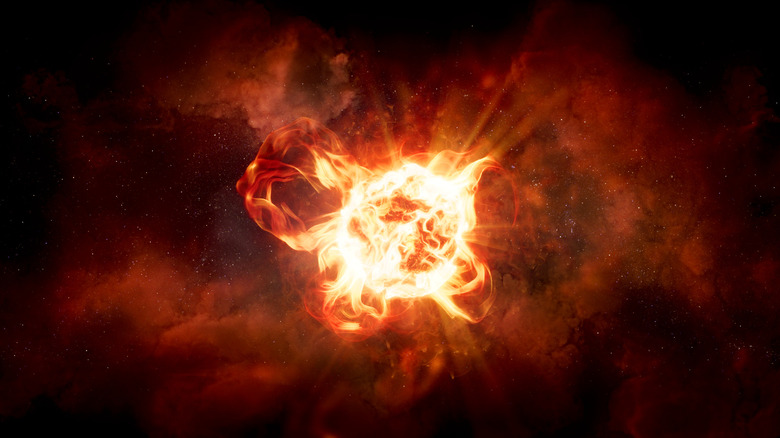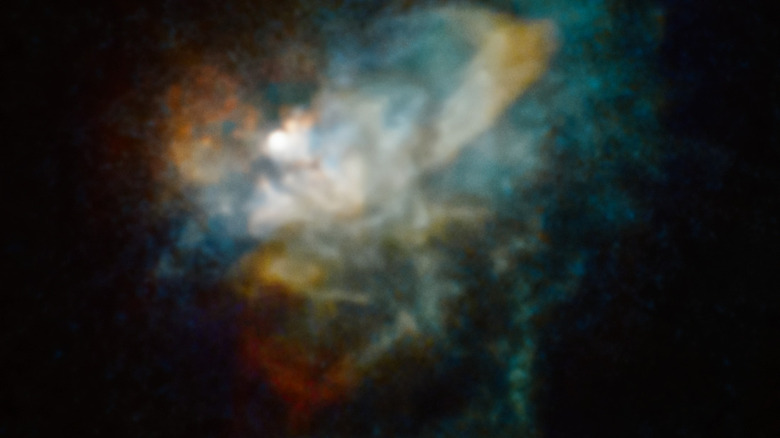The Reason Astronomers Are Watching This Hypergiant Star As It Dies
Our sun is huge compared to the Earth, capable of holding more than one million blue planets. The sun is small compared to some other stars in our galaxy, however. Stars like VY Canis Majoris, located in the constellation of Canis Major, is one of the largest known stars of a type called supergiants. It is so big (with a radius of 1,420 times that of the sun) that it is referred to as a hypergiant (via the University of Arizona).
It's rare to find a star this large, and researchers are intrigued as to how stars like this change and evolve over time. In particular, they know that stars this big tend to periodically throw off a significant amount of their mass differently than more typical small stars like our sun. Now, a research team of astronomers has been observing this monster to learn more.
"We are particularly interested in what hypergiant stars do at end of their lives," said Ambesh Singh, one of the researchers, in the University of Arizona article. "People used to think these massive stars simply evolve into supernovae explosions, but we are no longer sure about that."
The researchers don't think that supernovas are good explanations of how these massive stars die.
"If that were the case, we should see many more supernovae explosions across the sky," said another of the researchers, Lucy Ziurys in the same aritcle. "We now think they might quietly collapse into black holes, but we don't know which ones end their lives like that, or why that happens and how."
A Betelguese-like problem
One of the most famous hypergiant stars is Betelgeuse, located in the constellation of Orion. Betelgeuse has been the subject of a lot of interest recently because of its strange behavior: Beginning in 2019, the star dimmed dramatically, losing as much as two-thirds of its normal brightness (via NASA). Then, by 2020, it appeared to be back at its previous brightness. While it is normal for stars to dim or brighten over time, this is typically a process that happens much more slowly.
Originally, some observers thought that Betelguese might be about to go supernova. Others thought that the star could be covered in dark patches like sunspots. But research using the Hubble Space Telescope found that the cause of the dimming was something different: The star had produced a large amount of gas in an eruption, which had formed a dust cloud. This cloud was blocking some of the star's light from reaching us, hence why it appeared to look dimmer.
A similar process happens on VY Canis Majoris, but on a larger scale. "Think of it as Betelgeuse on steroids," said Ziurys. "It is much larger, much more massive and undergoes violent mass eruptions every 200 years or so."
The researchers observed VY Canis Majoris using tools like the Atacama Large Millimeter Array in Chile to look at the gas that the star is ejecting. They have spotted sulfur oxide, sulfur dioxide, silicon oxide, phosphorous oxide, and sodium chloride, and also gathered information on how well these chemicals are mixed within the gas. They also found that different ejections gave off different mixes of chemicals, helping to understand how stars like this one shed their mass over time (via the University of Arizona).

